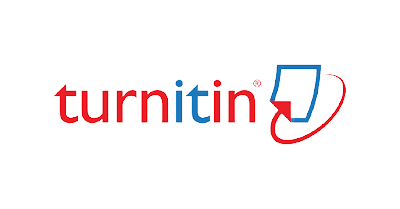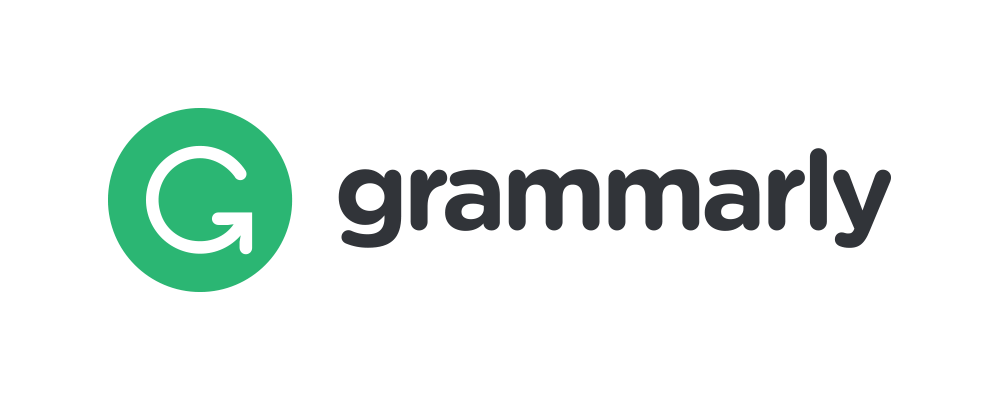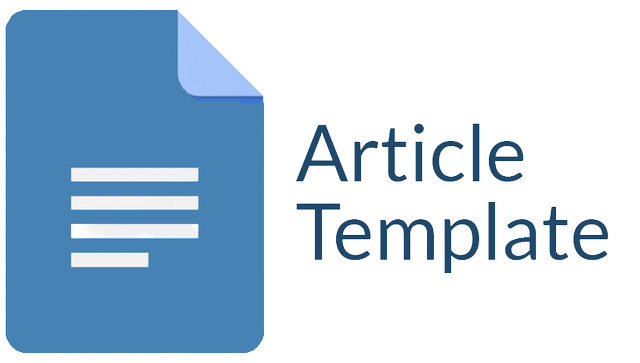MEDIA PEMBELAJARAN AUDIO-VISUAL UNTUK MENINGKATKAN MOTIVASI DAN KETERAMPILAN BERPIKIR KRITIS SISWA DENGAN PENDEKATAN SCIENTIFIC
Abstract
This research originated from a problem that occurred in the field: the implementation of physics learning was not optimal, which still refers to a low-level thinking model so that critical thinking skills in students are poorly trained. Therefore, teachers are led to be more professional and choose to use media that is in accordance with the material to be taught so that the teaching and learning process will be more effective and meaningful. One of the learning media tried in this study is audio-visual learning media with a scientific approach. This study aims to determine the effect of using audio-visual learning media with a scientific approach on achieving learning motivation and critical thinking skills in class X SMA Negeri 3 Singaraja in physics. This study takes a quantitative approach with quasi-experimental research and a pretest and posttest control group design. The research population was class X students, consisting of 5 classes with a total of 190 people, and the sample in class X2 was 40 people as the experimental class and class X3 with 40 people as the control class. The techniques used for data collection are questionnaires and tests. The research shows that there are differences in critical thinking skills before and after being given treatment. The Anacova test and t-test results with a significance value of 0.000 indicate that the sig value is 0.05 and the Pearson correlation (t) is 0.861. so that H0 is rejected and Ha is accepted. So it can be concluded that there is an influence of users of audio-visual learning media with a scientific approach on students' learning motivation and critical thinking skills, and there is a correlation between learning motivation and critical thinking skills in physics subjects at SMA Negeri 3 Singaraja.
Downloads
References
Abadi. M. K., Pujiastuti. H., Assaat. L. D. (2017). Development of teaching materials based interactive scientific approach towards the concept of social arithmetic for junior high school student.: Journal of Physics, 812(1), 1-6. (Dapat diakses: doi:10.1088/1742-6596/812/1/012015).
Arifin. M. C., Damariswara. R., Imron. I. F. (2023). Pengembangan media audio-visual sparkol videoscribe berbasis scientific approach pada materi dongeng pembelajaran bahasa indonesia untuk siswa kelasII SDNLirboyo 1 tahun ajaran 2021/2022. Edusaintek: Jurnal Pendidikan, Sains dan Teknologi, 10(1), 242-258. (Dapat diakses: https://doi.org/10.47668/edusaintek.v10i1.604).
Arikunto, S. 2016. Prosedur Penelitian Suatu Pendekatan Praktik. Rineka Cipta.
Fujiyanto. A., Jayadinata. A. K., Kurnia. D. (2016). Penggunaan media audio-visualuntuk meningkatkan hasilbelajar siswa pada materihubungan antarmakhluk hidup. Jurnal Pena Ilmiah, 1(1), 843.
Firman., Baedhowi., Murtini.W. (2018). The Effectiveness of The Scientific Approach to Improve Student Learning Outcomes. International Journal of Active Learning, 3(2), (86-91).
Ghozali. I. (2017). Pendekatan scientific learning dalam meningkatkan prestasi belajar siswa. Jurnal Pedagogik, 04(01), 1-13.
Halim. I. (2022). Pengaruh media pembelajaran dan motivasi belajar terhadap hasil belajar siswa pada mata pelajaran PKN di kelas V SDN 5 Tilango Kabupaten Gorontalo. Edusaintek: Jurnal Pendidikan, Sains, dan Teknologi, 9(1), 28-39. (Dapat diakses: https://doi.org/10.47668/edusaintek.v9i1.394).
Hernawati. D., Amin. M., Irawati. M. H., Indriwati. S. E., Omar. N. (2018). The effectiveness of scientific approach using encyclopedia as learning materials in improving students’ science process skills in science. Jurnal Pendidikan IPA Indonesia, 7(3), 266-272. (Dapat diakses: DOI: 10.15294/jpii.v7i3.14459).
Herlina. M., Syahfitri. J., Ilista. (2020). Perbedaan kemampuan berpikir kritis dan hasil belajar kognitif dengan model pembelajaran problem based learning berbantuan media audio-visual. Edubiotik : Jurnal Pendidikan, Biologi dan Terapan, 5(01), 42-54.
Iriyanti. (2020). Penggunaan media audio-visual untuk meningkatkan keterampilan berbicara siswa pada materi narrative text. Jurnal Pendidikan BINANIAGA, 01(01), 35-48.
Jusmeri. (2021). Penggunaan media audio-visual dalam pembelajaran menyimak dikelas VI Sekolah Dasar. Primary: Jurnal Pendidikan Guru Sekolah Dasar, 10(6), 1683-1688. (Dapat diakses: http://dx.doi.org/10.33578/jpfkip.v10i6.8637).
Kustandi, Cecep, & Sutjipto, B. (2013). Media Pembelajaran Manual dan Digital. Jakarta: Ghalia Indonesia.
Kementrian Pendidikan dan Kebudayaan. (2013). Implementasi Kurikulum 2013 Konsep Pendekatan Scientific. Jakarta: Departemen Pendidikan dan Kebudayaan.
Laaser, W., & Toloza, E. A. (2017). The changing role of the educational video in higher distance education. International Review of Research in Open and Distance Learning, 18(2), 264–276. (dapat diakses: https://doi.org/10.19173/irrodl.v18i2.3067).
Mundilarto, M. (2013). Keefektifan Pendekatan Inquiry Based Learning untuk Meningkatan Karakter Peserta Didik SMA pada Pembelajaran Fisika. Jurnal Pendidikan Mtk & Sains, 1(1).
Sidi. J., Mukminan. (2016). Penggunaan media audio-visual untuk meningkatkan hasil belajar IPS di SMP. Socia, 15(1), 52-72.
Sholihin. A. (2019). Penerapan pendekatanscientific model NHT (numbered Head together) untuk meningkatkan aktivitas dan Hasil belajarsiswa kelas viii Mata pelajaran ips di smp negeri 2 kendit Tahun pelajaran 2018/2019. EDUSAINTEK: Jurnal Pendidikan Sains dan Teknologi, 6 (2). 25-38.
Sriwidayah. (2017). Penggunaan media audio-visual untuk meningkatkan kemampuan siswa dalam memahami unsur intrinsik cerita di kelas VI SDN Jogosatru. Dwijacendekia Jurnal Riset Pedagogik. 1 (1), 84-91.
Sumianto. T., Susilo. S.V., Febriani. B. (2020). Penggunaan media pembelajaran berbasis audio-visual untuk meningkatkan hasil belajar bahasa indonesia di sekolah dasar. Jurnal Cakrawala Pendas, 6(2), 108-115.
Susilowati. R., Relmasira. S.C., Hardini. A. T. A. (2018). Penerapan model problem based learning berbantu media audio-visual untuk meningkatkan berpikir kritis kelas 4 SD. Jurnal Ilmiah Pendidikan dan Pembelajaran, 2(1), 57-69.
Triyuni. (2016). The influence of science learning set using scientific approach and problem solving model on learning outcomes of junior high school students in the subject of heat and temperature. Jurnal Pendidikan IPA Indonesia, 5(2), 177-185. (dapat diakses: DOI: 10.15294/jpii.v5i2.7679).
Utami. M.T., Koeswati. H.D., Giarti. S. (2019). Model problem based learning (PBL) berbantuan media audio-visual untuk meningkatkan keterampilanberpikir kritis pada siswa kelas 5 sekolah dasar. MAJU, 6(1), 80-91.
Wahyono., Abdulhak. I., Rusman. (2017). Implementation of scientific approach based learning to think high levels in state Senior High School in ketapang. International Journal of Education and Research, 5(8), 221-230.
Copyright (c) 2023 Made Prima Restami, Muhamad Samsudin

This work is licensed under a Creative Commons Attribution-ShareAlike 4.0 International License.
Jurnal allows anyone to compose, correct, and do derivative works, even for commercial purposes, as long as they credit for the original work. This license is the freest. It is recommended for maximum distribution and use of licensed material.
The submitted paper is assumed not to contain any proprietary materials that are not protected by patent rights or patent applications; The responsibility for technical content and protection of proprietary materials rests with the authors and their organizations and not the responsibility of journal or its editorial staff. The primary (first/appropriate) author is responsible for ensuring that the article has been viewed and approved by all other authors. The author's responsibility is to obtain all necessary copyright waivers to use any copyrighted material in the manuscript before submission.
Jurnal Pendidikan, Sains dan Teknologi allows the author(s) to hold the copyright without restrictions and allow the author(s) to retain publishing rights without restrictions. Jurnal Pendidikan, Sains dan Teknologi CC-BY-SA or an equivalent license as the optimal license for the publication, distribution, use, and reuse of scholarly work. Jurnal Pendidikan, Sains dan Teknologi allows the author(s) to hold the copyright without restrictions and allow the author(s) to retain publishing rights without restrictions. Jurnal Pendidikan, Sains dan Teknologi CC-BY-SA or an equivalent license as the optimal license for the publication, distribution, use, and reuse of scholarly work.
In developing strategy and setting priorities Jurnal Pendidikan, Sains dan Teknologi recognize that free access is better than priced access, libre access is better than free access, and libre under CC-BY-SA or the equivalent is better than libre under more restrictive open licenses. We should achieve what we can when we can. We should not delay achieving free in order to achieve libre, and we should not stop with free when we can achieve libre.
Jurnal Pendidikan, Sains dan Teknologi is licensed under a Creative Commons Attribution-ShareAlike 4.0 International License.
You are free to:
- Share a copy and redistribute the material in any medium or format
- Adapt a remix, transform, and build upon the material for any purpose, even commercially.
- The licensor cannot revoke these freedoms as long as you follow the license terms.






